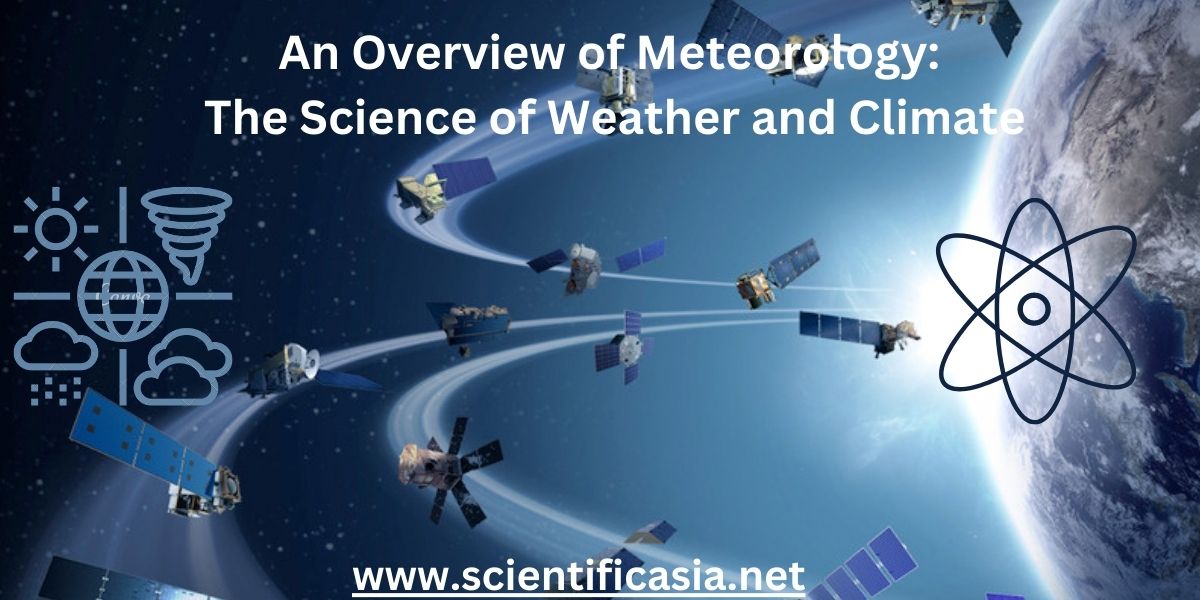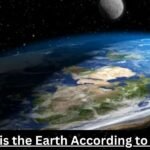Weather and climate impact almost all social, industrial, agricultural, commercial, and transportation activities. At all stages of growth and development, the atmosphere affects and sustains human life, animal life, microorganisms, insects, pests, plants, tree forests, and marine culture.
Meteorologist study is the study of atmospheric properties and conditions, including the physics and chemistry of the atmosphere. Meteorology exerts the most significant impact on every human endeavor in modern life.
Now, let’s take a deep dive into this Scientific Asia article about Meteorology.
What is Meteorology?
Meteorology is the study of observed weather events as meteorological phenomena. Temperature, air pressure, water vapor, and mass flow along with their variations, interactions, and temporal variations are used to characterize and quantify weather phenomena.
The impact of air conditions on life needs the study of meteorology.
Cities are planning for extreme weather conditions such as tornadoes and snowstorms in order to avoid losses.
Long-term weather forecasting is critical for agriculture. Meteorology is essential for farmers because crops need water to grow.
Who are Meteorologists?
Weather meteorologists are commonly thought of as persons who forecast the weather. Meteorologists are both spectators and investigators.
They take notice of the physical characteristics of the atmosphere above them and research maps, satellite data, and radar data. A meteorologist also compares weather data from multiple local, regional, and worldwide sources.
Meteorologist studies are frequently categorised into a variety of specialized fields. Climate modeling, remote sensing, air quality, atmospheric physics, and climate change are all areas of meteorologic study. These activities frequently necessitate extra specialized education in relevant fields.
They also investigate the connection between the atmosphere and the Earth’s temperatures, oceans, and biological life.
Brief History of Meteorology
After describing what meteorology is all about, it’s time to go back in time. Although the current educational system teaches students about modern meteorology, it is equally necessary to understand where it all originated.
People have been observing the atmosphere for centuries to predict the weather, but Aristotle was the first to write his observations in a book in 340 BC. Observations were made manually until the 17th century, when a thermometer, followed by a barometer, was constructed.
Meteorology in the 17th Century
Meteorology as a science was born in the 17th century.
Agriculture and trade were negatively impacted by severe storms of the 17th century, most notably the London Frost Fair on the frozen Thames River in 1683-84. Men of science developed meteorological instruments in response and used them to develop a more methodical understanding of weather and climate.
The seventeenth-century interest in the atmosphere was primarily concerned with the basic understanding of atmospheric parameters and developing experimental instruments to record atmosphere factors such as temperature, humidity, and air pressure. Methodical data collection had not expanded extensively enough.
Meteorology in the 18th Century
The weather prediction was an art form in and of itself in the 18th century. The early 18th century marked the beginning of a scientific approach to weather forecasting, but development was gradual.
People used observations, almanacs, and ‘indicator notebooks’ to predict the weather in the 18th century. The moon, clouds, and wind, as well as particular animal behavior, all served as vital signals.
By the early 18th century, up to 35 distinct temperature scales had been developed. Daniel Gabriel Fahrenheit was one of them. He made precise mercury thermometers calibrated to a standard scale ranging from 32° to 96°.
There was no quick way to convey meteorological data until American inventor Samuel Morse invented the telegraph in the mid-1800s.
Meteorology in the 19th Century
With the development of the telegraph and photography in the 19th century, it became possible to follow storms and establish weather observation networks. In addition, scientists started predicting the weather using mathematical models.
The telegraph was rendered obsolete by the end of the 19th century due to the development of several other technologies. In the last 180 years, both weather forecasting and reporting methods from the telegraph to the Internet today have improved significantly.
Meteorology in the 20th Century
Radar and satellite technology were developed in the 20th century. It significantly improves the ability to view and follow weather systems. The first weather forecasts and temperature projections were also developed by meteorologists and atmospheric scientists.
Meteorology Today
Today’s weather meteorologists can investigate, model, and predict weather systems with various instruments. These tools are used to enhance forecast efficiency and accuracy at various meteorological scales.
Dual-polarization radar is a recent innovation that sends horizontal and vertical radio wave pulses. Rain, snow, sleet, or hail are distinguished from other types of precipitation. Flash flood and winter weather forecasts will be significantly improved by dual-polarization radar.
Meteorologist Tools and Technologies
The technology used by meteorologists has transformed over time, but they have always kept an eye on the atmospheric factors that affect the weather.
Scientists started using improved tools as technology developed in order to gather and analyze more data. Meteorologists can now produce better forecasts more quickly than ever due to technological advancements.
Below are some of the commonly used tools and technologies:
Barometers
Barometers are used to measure air pressure. In meteorology, the study of the atmosphere and weather phenomena, barometers play an important role. Barometers are used by meteorologists to forecast upcoming weather situations. The key characteristics of barometers are listed below:
- Pressure is measured by a barometer.
- A meteorologist use a barometer.
- Throughout history, various types of barometers have been created and employed.
Weather Balloons
These are helium-filled balloons that carry instruments to measure temperature, humidity, pressure, and wind direction and speed at different altitudes. The weather balloons provide
- Important real-time input for computer forecasting models.
- Local information for meteorologists to forecast and anticipate storms.
- Climate tracking.
- Information for scientific studies to better comprehend weather and climate systems.
Doppler Radar
Doppler radar is a tool used in weather forecasting to determine the direction and velocity of objects, such as raindrops. Weather meteorologists use Doppler radar to aid weather forecasting by determining the movement in the atmosphere is horizontally towards or away from the radar.
Hygrometers
Electrical hygrometers assess the change in electrical resistance produced by changes in humidity in a thin layer of lithium chloride or a semiconductor device. Other hygrometers measure changes in humidity-sensitive substances’ weight, volume, or transparency.
Hygrometer’s primary function is to measure the quantity of moisture in the air and compare it to the maximum amount of moisture that the air, confined area, or soil may potentially contain.
Hygrometers operate by using quantities such as mass, pressure, temperature, and others, that are affected by how much moisture is absorbed by these elements.
Weather Satellites
A new area in weather forecasting has been made possible by the development of weather satellites. With satellite observations, weather can be regularly measured for 24 hours. As a result, they offer a potent tool for weather forecasting.
A meteorologist uses satellite images to keep track of weather-related information such as temperature, moisture content, and cloud patterns. NSAT-3D, INSAT-3DR, NOAA-15, NOAA-18 and NOAA-19 (POES), and NOAA-20 (JPSS) are famous weather satellites.
Thermometers
The measurement of temperature with weather thermometers is an essential part of weather forecasting. Meteorologists use various types of thermometers to measure temperature at different levels of the atmosphere.
Many thermometers are packaged in a glass tube with a liquid inside, commonly mercury or alcohol. When a liquid is hotter or colder, it expands or shrinks accordingly.
Meteorology Applications in Various Fields
Meteorology has a wide range of applications in various fields. Some of them are mentioned below.
Aviation Meteorology
Aviation meteorology is the study of weather from the particular viewpoint of the aviation sector. Weather affects aviation efficiency and safety. Accurate weather forecasting of factors like wind, temperature, pressure, and others is necessary for the safe operation of airplanes.
The goal of aviation meteorology was to deliver weather forecasts designed to the expanding needs of aviation. According to the National Oceanic and Atmospheric Administration (NOAA), weather delays account for 69% of all aircraft delays, costing tourists and the aviation sector $30 billion yearly.
Agricultural Meteorology
Agriculture’s success or failure depends on weather and climate. Plants grow and produce as a result of their genetic composition as well as their surroundings. Agricultural meteorology assists farmers in meeting global demand for food and other agricultural goods through careful planning and study.
The United Nations Office for Disaster Risk Reduction (UNISDR) estimates that weather-related incidents cause over 90% of all-natural disasters including floods and droughts.
Hydrometeorology
In the field of meteorology, hydrometeorology concerns with the hydrologic cycle, the water budget, and storm rainfall data are addressed. The world is experiencing more frequent and severe weather events, such as flooding, droughts, and storms because of climate change.
The study of hydrometeorology is growing more significant due to frequent weather changes. According to the research of WHO and UNICEF, 2 billion people live in homes with a lack of access to properly managed drinking water. Only 1.2 billion of them have access to safe drinking water.
Military Meteorology
Military meteorology is meteorology used by the armed forces or other organizations for military objectives. It is one of the most typical industries in which meteorologists work.
Military meteorology is important for the success of military operations all over the world. To produce precise meteorological data and forecasts, military meteorologists adopt various methods and equipment, such as satellite data, radar, and computer models.
Maritime Meteorology
The study of Maritime meteorology is associated with oceanographic conditions and interactions between the ocean and atmosphere. It focuses on the area of meteorology also known as marine meteorology. Marine meteorology works with larger weather and climate systems.
Maritime meteorology is crucial for assuring the safety and efficiency of sea activities, which are critical for worldwide trade and commerce. Maritime meteorology protects both human life and the marine environment.
Nuclear Meteorology
Nuclear meteorology examines the movement of radioactive gases and aerosols. They are present at nuclear energy production facilities, where they monitor reactors for radiology leaks and predict their environmental impacts. They try to assure environmental compliance at any facility that employs nuclear technology.
Most importantly, they track pollution dispersal by analyzing air currents and turbulence and forecasting where the substance will travel. They were critical in assessing the spread of radioactive material following the Chornobyl meltdown and conveying information to European governments about the tragedy.
Conclusion
To summarize, meteorology is a complicated and ever-changing field that plays an important part in our understanding of weather and climate. Meteorologists predict accurate weather forecasting and guide decision-making in a variety of industries, including agriculture, aviation, and maritime activities by analyzing atmospheric conditions.













